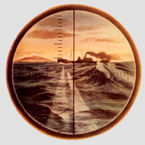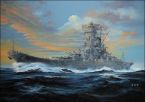hawker
Posts: 849
Joined: 6/25/2005
From: Split,Croatia
Status: offline

|
quote:
Was not one of the designers of the P51 a German anyway !!!
who also worked on the 109 !
Ok,little story of P-51:
The P-51 Mustang is best remembered for its heroic escort missions in support of the B-17 Flying Fortress and B-24 Liberator bombers of the 8th Air Force. Able to take off from bases in England and fly all the way to Berlin and back, the Mustang was able to defend the bombers, fight the Luftwaffe and wreak havoc on the ground on the way home. The Mustang played a major part in the defeat of the Luftwaffe and gaining air superiority over Germany. But success was not immediate or as simple as it seems.
Following years of neglect and lethargy, the British Armed Forces were faced in the mid 30s with an increasingly unstable Europe and the distinct possibility of war. Despite having, in the Spitfire and Hurricane, some of the best fighter aircraft in the world, the RAF were unable to order sufficient numbers to face the increasingly threatening situation. The British Purchasing Commission (BPC) looked overseas in the late 30s for alternative sources of military aircraft. Despite the shortcomings of the type, the BPC began to order large numbers of the Curtis P-40. Curtis themselves were unable to meet the orders and timeframe required by the British and invited North American to undertake license production. NA were not happy with this situation and in April 1940 proposed an ambitious plan to produce an improved design, using the same Allison engine, but with a more streamlined and modern airframe. NA undertook to have a prototype available in double quick time and, using modern mass production techniques, deliver 320 of the new fighter by September 1941. The BPC ordered and the prototype duly flew in late October 1940, barely 6 months later! Over 600 were eventually ordered for the RAF as the Mustang 1. (The origin of the name "Mustang" is unknown).
The new fighter certainly looked good with a sleek, purposeful fuselage and neat laminar flow wings. Initial British tests showed that the Mustang 1 was around 35 MPH faster than the Spitfire V at up to 15,000 feet but above that height, performance dropped off rapidly. Time to height was also poor in the Mustang and the British decided to continue development of the Spitfire as an interceptor and utilise the Mustang for other tasks such as Army Co-operation and Ground Attack. In this role, the Mustang was quite a success although it was found wanting in the event of enemy fighter intervention. The Mustang was not at this stage an air to air fighter but things were to change!
In April 1942, Ronald Harker, Rolls Royce senior Test Pilot was invited to fly in a Mustang 1. In part of a subsequent memo he wrote "....the point which strikes me is that with a powerful and a good engine like the Merlin 61, its performance could be outstanding....". This lead to a meeting between the Air Ministry and Roll Royce and ultimately to the decision to proceed with the RR Merlin engined Mustang. The installation was relatively easy, the cowlings even remaining largely unaltered. Meantime, the Americans also proceeded to install a licence built Packard Merlin engine in the Mustang. First flight of a Merlin powered Mustang was on 13 October 1942 and despite a few teething problems and directional stability problems, the Merlin Mustang was a huge success. The Packard Merlin installation proved a little more troublesome, the license built engines being less reliable and prone to leakage. Both the RAF, as the Mustang III, and the USAAF, as the P-51B, ordered large numbers of the "new" fighter. The Americans, having found that unescorted daylight bomber raids over Germany proved too costly, found in the Mustang a fighter with the performance and range to cover the bombers deep into the Reich.
The P-51B (and the P-51C built at Dallas) began to enter service with the USAAF and flew the first European missions in December 1943. Initially, problems were encountered with freezing guns and the still troublesome Packard Merlin engines. Gradually however, the problems were ironed out and the Mustang began to replace the earlier P-47s and P-38s in the Bomber escort role.
In late 1943, the definitive Wartime Mustang, the P-51D, was ordered. This introduced the bubble canopy, more fuselage tankage, the ability to carry 100 gallon drop tanks and an improved version of the Packard Merlin. Now the USAAF had an escort fighter which could fly all the way to Berlin and back and the first escorted raid to the Nazi capital took place on 6th March 1944. As the air war intensified during 1944, the Mustangs gradually frittered the Luftwaffe down in the long war of attrition. This was the Mustangs finest hour and rightly, its claim to fame. Many of the American aces and commanders, along with their Mustangs, became heroes and household names. Without doubt, the Mustang was the finest American fighter of the War. In all, just under 14,500 Mutangs were built in the US with a further 100 being assembled in Australia by Commonwealth, who also manufactured another 226.
After WWII, with the dawning of the jet age, many thousands of Mustangs were stored and scrapped. Many however made their way to fledgeling Air Forces all over the World and formed the backbone of many for years. The Mustang made an important contribution in the Korean war in the fighter-Bomber role, re-equipping several wings due to the short range of the early jets.
Post war, the Mustang has also made a name for itself on the Warbird scene. The Mustang is by far the most numerous and popular airworthy warbird in the World. In 2002, some 160 or so examples of this great fighter are airworthy and another 20 or so are in rebuild.
_____________________________
 Fortess fortuna iuvat
|
 Printable Version
Printable Version










 .
. 
 .
.



 New Messages
New Messages No New Messages
No New Messages Hot Topic w/ New Messages
Hot Topic w/ New Messages Hot Topic w/o New Messages
Hot Topic w/o New Messages Locked w/ New Messages
Locked w/ New Messages Locked w/o New Messages
Locked w/o New Messages Post New Thread
Post New Thread